Mini Electric vs Nissan Leaf: Which budget EV is right for you?
What's the best electric car you can get for less than $30,000?
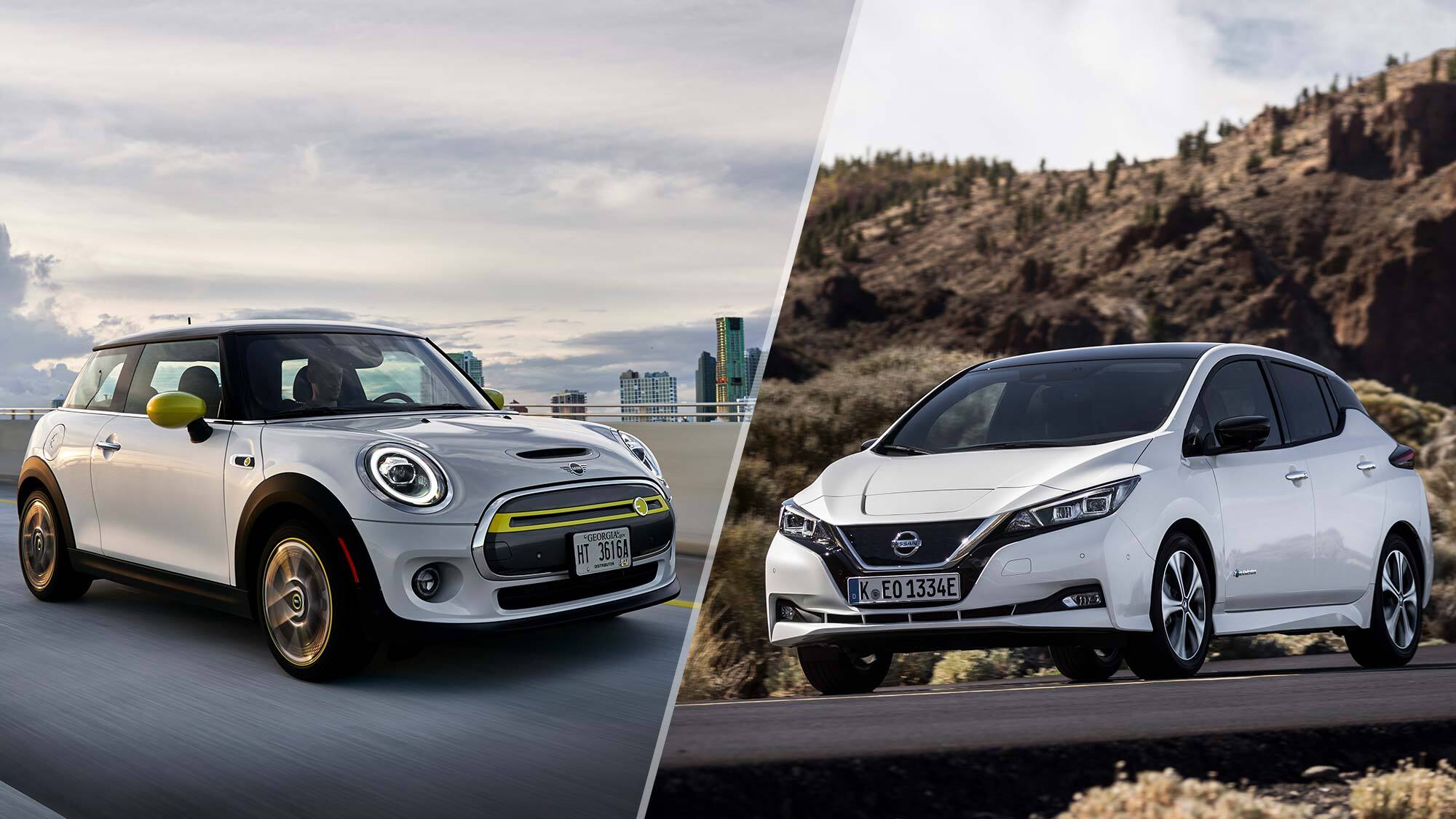
When it comes to buying a cheap electric car in the United States, or rather one that costs less than $30,000, you only have two options: The 2022 model Nissan Leaf, or BMW’s Mini Electric.
At a glance both cars are fairly similar beyond their price. Both are small compact hatchbacks, and both are at the lower end of the scale of what’s acceptable to have in a modern EV — though that’s not to say that they're bad cars.
- Here are the best electric cars you can buy right now
- 9 essential tips for buying an electric car
- Plus: Self-driving cars: Here’s what the autonomous driving levels mean
If you’re looking into picking up a budget EV — and we use the term ‘budget’ very loosely — you’re going to need to decide between these two cars. But which one do you pick? Let’s break it down and work out exactly what you’d get from each car.
Mini Electric vs Nissan Leaf: Specs
| Row 0 - Cell 0 | Mini Electric | Nissan Leaf (40 kWh) |
| Price | From $29,900 | From $27,400 |
| Range | 114 miles | 149 miles |
| Charging | 50kW | 50kW |
| Top Speed | 93 mph | 89 mph |
| 0-60mph | 6.9 seconds | 8.3 seconds |
| Extra features | Mini connected mapping, adaptive cruise control, panoramic glass roofse control | Android Auto, Apple CarPlay, adaptive cruise control Nissan connected maps, ProPilot autonomy, emergency driver assistance features |
Mini Electric vs Nissan Leaf: Price
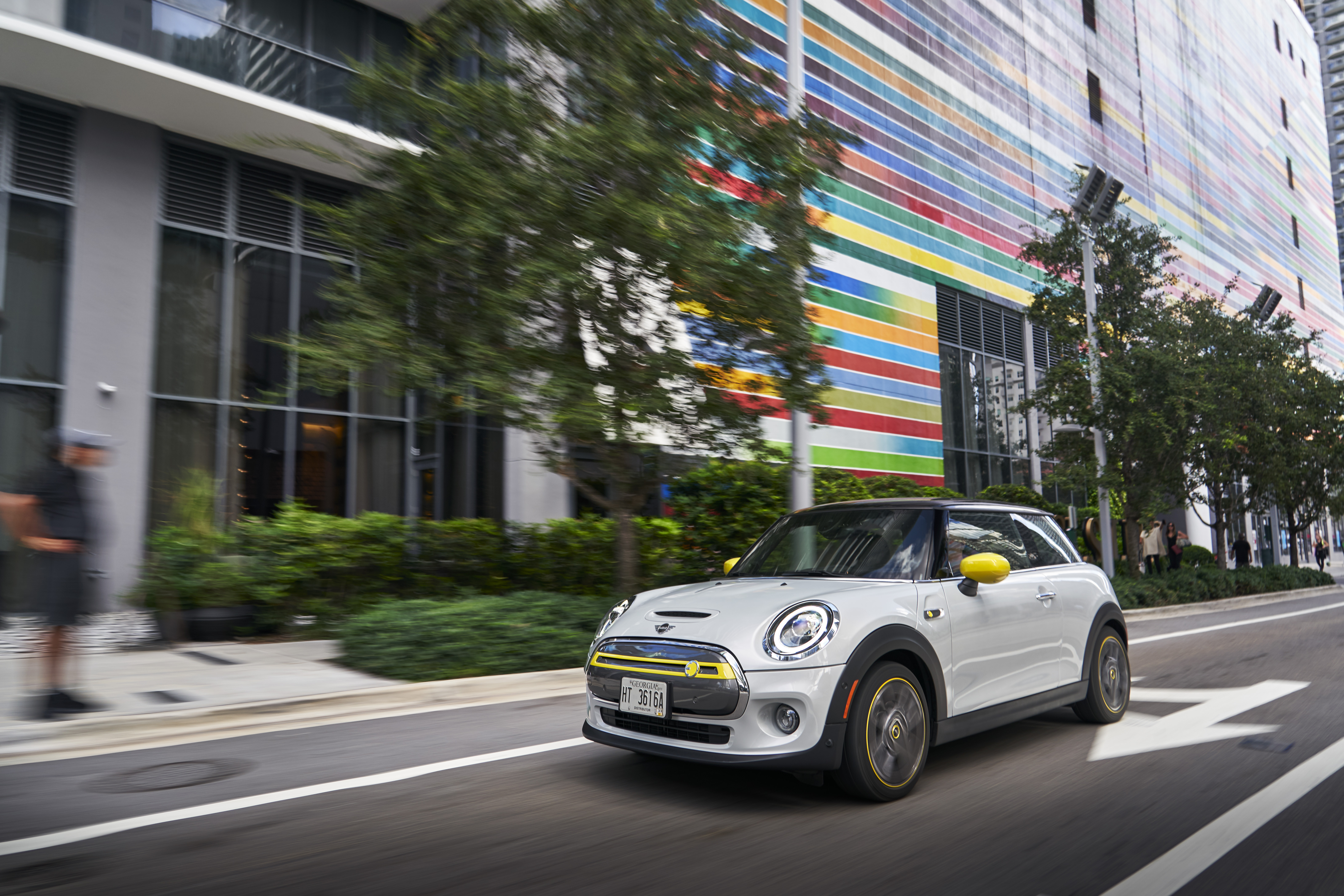
The Mini Electric starts at $29,990 in the U.S, though you can increase that figure with various optional extras and tech packages. The Nissan Leaf is available in a number of different models, each with their own separate features as standard.
The cheapest Leaf available to buy is the Nissan Leaf S, which starts at $27,400. Meanwhile the Leaf S Plus, the cheapest extended Leaf, starts at $32,400.
Both the Mini Electric and Nissan Leaf are also eligible for the full federal EV tax credit, which is worth up to $7,500.
Mini Electric vs Nissan Leaf: Battery and range
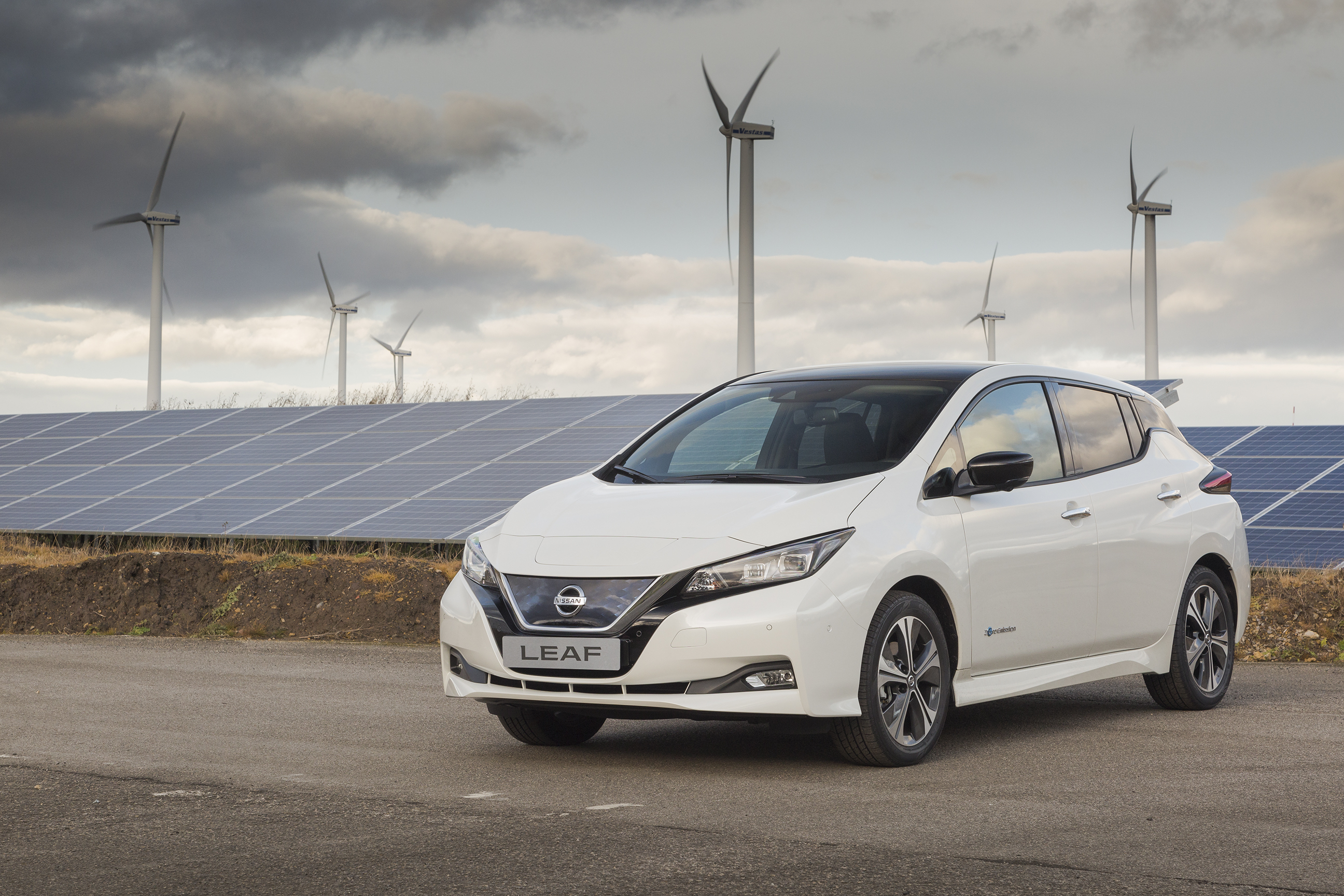
The Mini Electric has a 32.6 kWh battery, which offers 114 miles of range, according to the EPA testing scale. Meanwhile the Nissan Leaf S has a 40 kWh battery that offers 149 miles of range per the EPA scale. The Leaf S Plus, meanwhile, has a 62kWh battery, and offers 226 miles of range.
Whichever way you look at it, Nissan certainly has Mini beaten where range is concerned. But what about recharging? Well in that instance both entry-level cars are pretty evenly matched.
Both the Leaf S and Mini Electric can handle up to 50 kW rapid charging speeds, which is what you’d be using if you're out on a road trip. According to Mini, its car can recoup 80% of its power in just 36 minutes, while Nissan says it’ll take 40 minutes for the 40 kWh battery to reach that same level.
It’s also worth mentioning that the Leaf S Plus’s 62 kWh battery takes an hour to charge to 80% at 50 kW speeds. However it does support 100 kW chargers, and can get to the same level in 45 minutes.
Nissan certainly has Mini beaten on paper, even if you ignore the larger battery and faster charging available on the Leaf S Plus — and for a lower price tag.
However, it’s worth mentioning that the Mini Electric uses the CCS charging port standard, while Nissan has clung onto the dying CHAdeMO port on the Leaf. Fortunately the 2002 Leaf S has the rapid charger as a standard feature, which wasn’t the case previously.
There’s no shortage of CHAdeMO chargers out there, but it is still the HDDVD to CCS’s Blu-ray. Electrify America, the largest charging network in the U.S., has announced it plans to stop installing CHAdeMO chargers outside of California. So bear that in mind.
Mini Electric vs Nissan Leaf: Power and performance
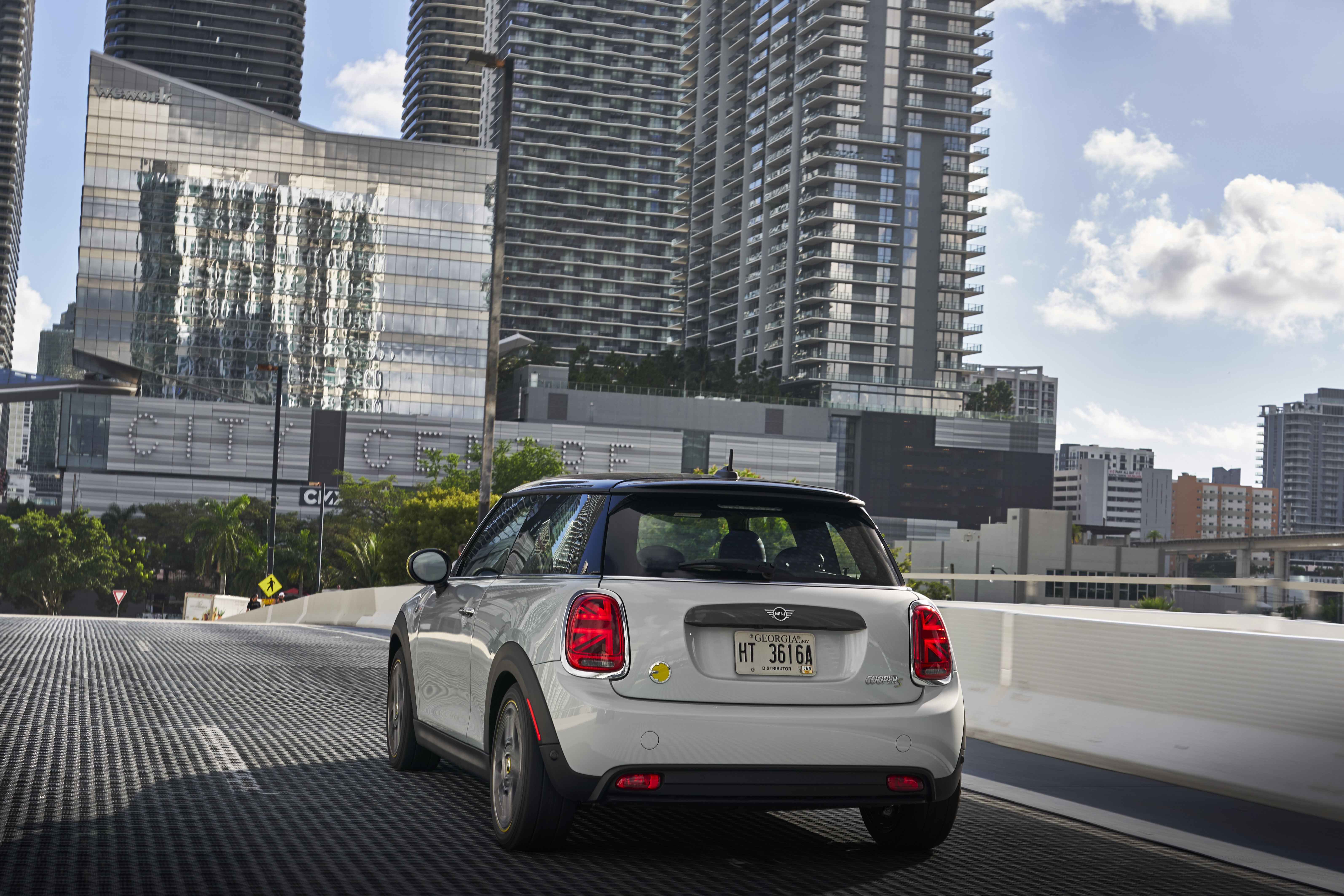
The Mini has an advantage where power is concerned, since it packs in a 135kW electric motor that pumps out 181 horsepower. The 40 kWh Leaf’s motor is only 110 kW, and offers a reduced 147 horsepower. The 62 kWh Leaf is a more powerful 160kW, but is also a good $2,000 more expensive than the Mini.
The power is also reflected in both cars’ top speed and their 0-60 times. The Mini Electric has a top speed of 93 miles per hour and a 0-60 time of 6.9 seconds. Altogether nothing particularly special, and it certainly won’t be winning any drag races. But it is still noticeably better than the 40 kWh Leaf’s top speed of 89 miles per hour, and 8.3-second 0-60 time.
The 62 kWh Leaf can hit 98 miles per hour, and goes from 0-60 in 6.7 seconds. But again, you’re paying more for that privilege.
Both cars are only available with front wheel drive, so there’s absolutely no difference where that is concerned.
Mini Electric vs Nissan Leaf: Design and interior
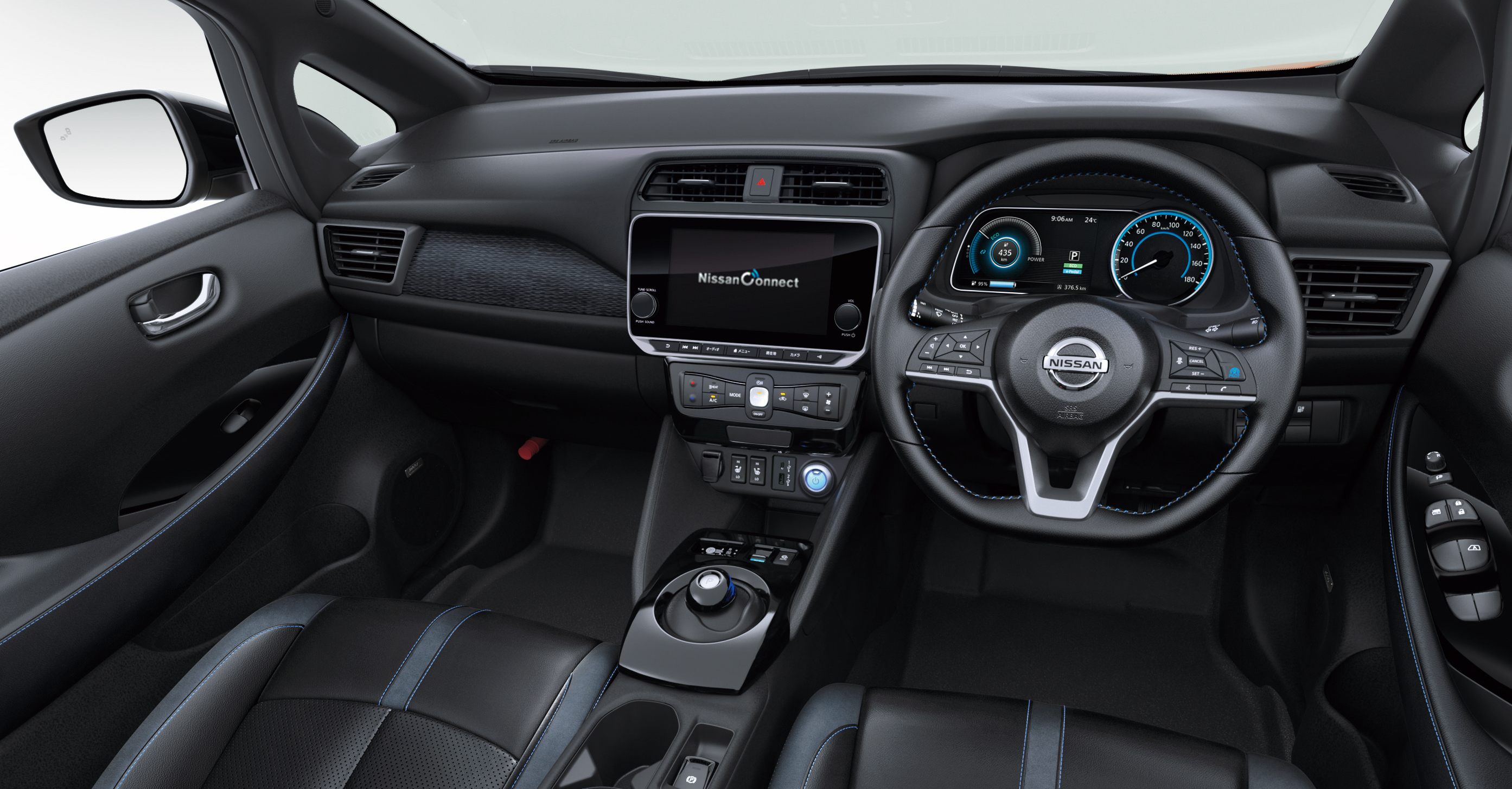
The Mini Electric is one of the new wave of electric cars that has been designed to look virtually identical to its gas-powered counterparts. There are a few differences here and there, like the lack of a front grill, a charging port instead of a gas tank, and the lack of exhaust, but it’s still virtually indistinguishable from a regular gas-powered Mini.
It’s the modern Mini design, rather than the classic Italian Job-style look, but that’s to be expected. If anything, those old cars wouldn’t have had the room for larger batteries anyway.
The Nissan Leaf does share its design with a gas-powered car, though not one you’ll have seen on the roads in the U.S. It’s the same design as the Nissan Micra, and shares a lot of the same design cues as other Nissan vehicles — especially around the headlight area.

Really the Leaf doesn’t look that special, and has little to differentiate it from a pretty standard hatchback from the outside. Whereas the Mini looks like, well, a Mini.
The Mini’s design may not have changed much since the brand was reintroduced in 2001, but it hasn’t really aged as much as the Leaf — which could already do with a refresh, despite only having been unveiled back in 2017.
Inside and things are much the same. The Nissan Leaf doesn’t really feature anything particularly noteworthy, though it does manage to offer up to 30 cubic feet of cargo space — 23.6 cubic feet of which is just in the trunk.
The Mini Electric offers an improved 34 cubic feet of cargo space, which is a win, but only 8.76 cubic feet of that is in the trunk. In other words, fitting a lot of stuff into this car is going to be dependent on you folding down the rear seats. However it also comes with a feature no Nissan Leaf model has to offer: a glass roof that opens up.
The roof is an option you don’t need to have, but it also doesn’t cost any extra either way. So if you miss the good old days of the sun roof, Mini has you covered. It even has a wind deflector and a powered sunshade for maximum comfort.
Mini Electric vs Nissan Leaf: Autonomous driving and other features
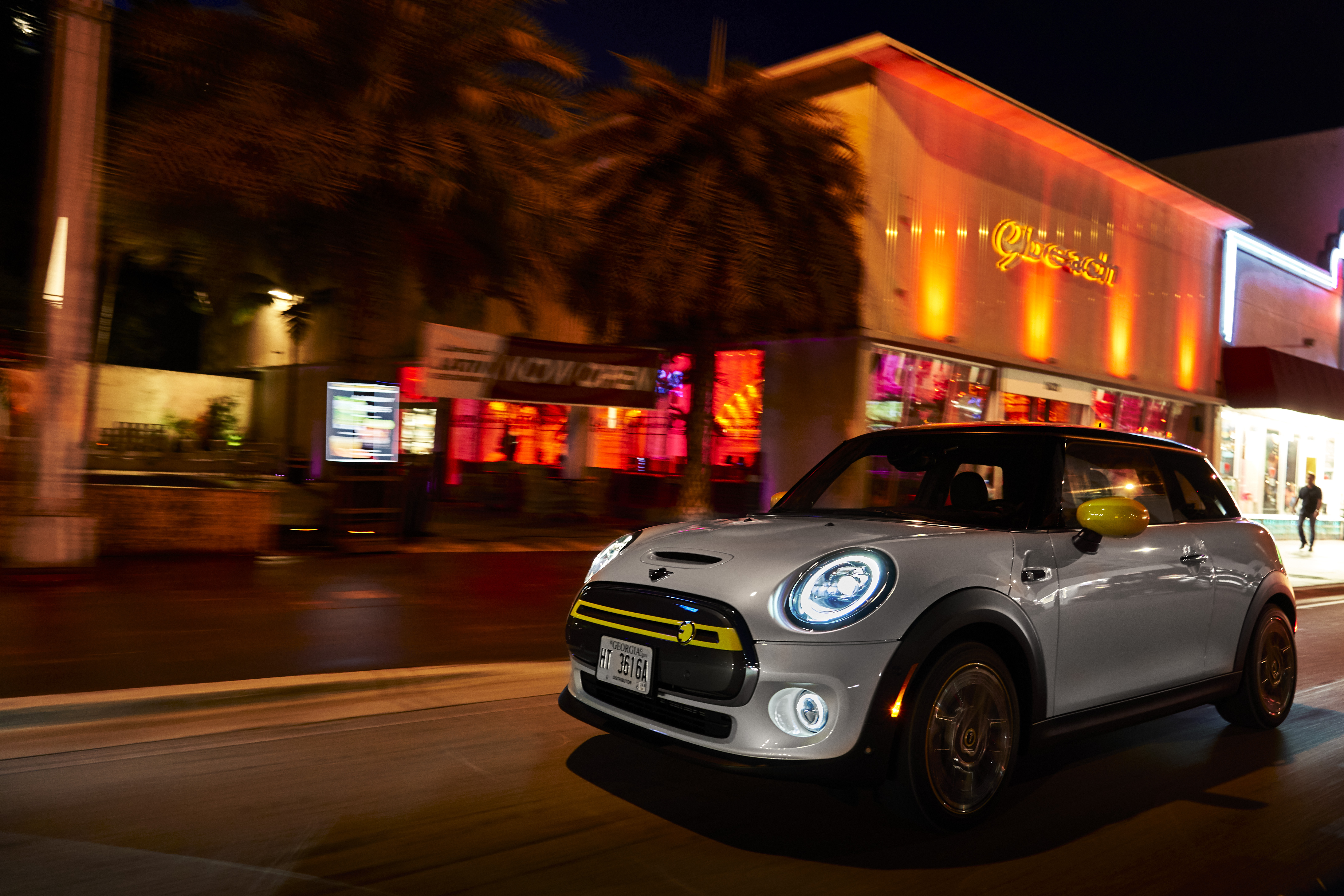
When it comes to autonomy, things are a pretty mixed bag for both cars. While Nissan has the ProPilot system that can adjust speed and position within a lane, that option is only available on the $35,400 Leaf SV Plus model. So in effect you are paying $8,000 to get the best autonomous experience (plus other features).
Mini Electric’s driver assistance package is a $750 add-on, but it’s nowhere near as comprehensive as Nissan’s. In fact it only has two features, active (adaptive) cruise control and parking assist.
Nissan's Intelligent Cruise Control is available separately from ProPilot, but the cheapest model to include it is the $28,800 Leaf SV. That’s $1,400 more than the Leaf S, but still cheaper than the Mini Electric. However it appears as though ProPilot Park, Nissan’s parking assistance feature, is not available in the U.S., which is a loss for the Leaf.
Both cars come with lane departure warnings as well as active safety measures like emergency front brakes. But these are standard on such a wide range of modern cars that they’re not actually that impressive. If anything, Mini and Nissan would look bad for not including them.
The rest of the tech inside both cars is fairly mixed, and deciding what is better is pretty much dependent on what you want from your car.
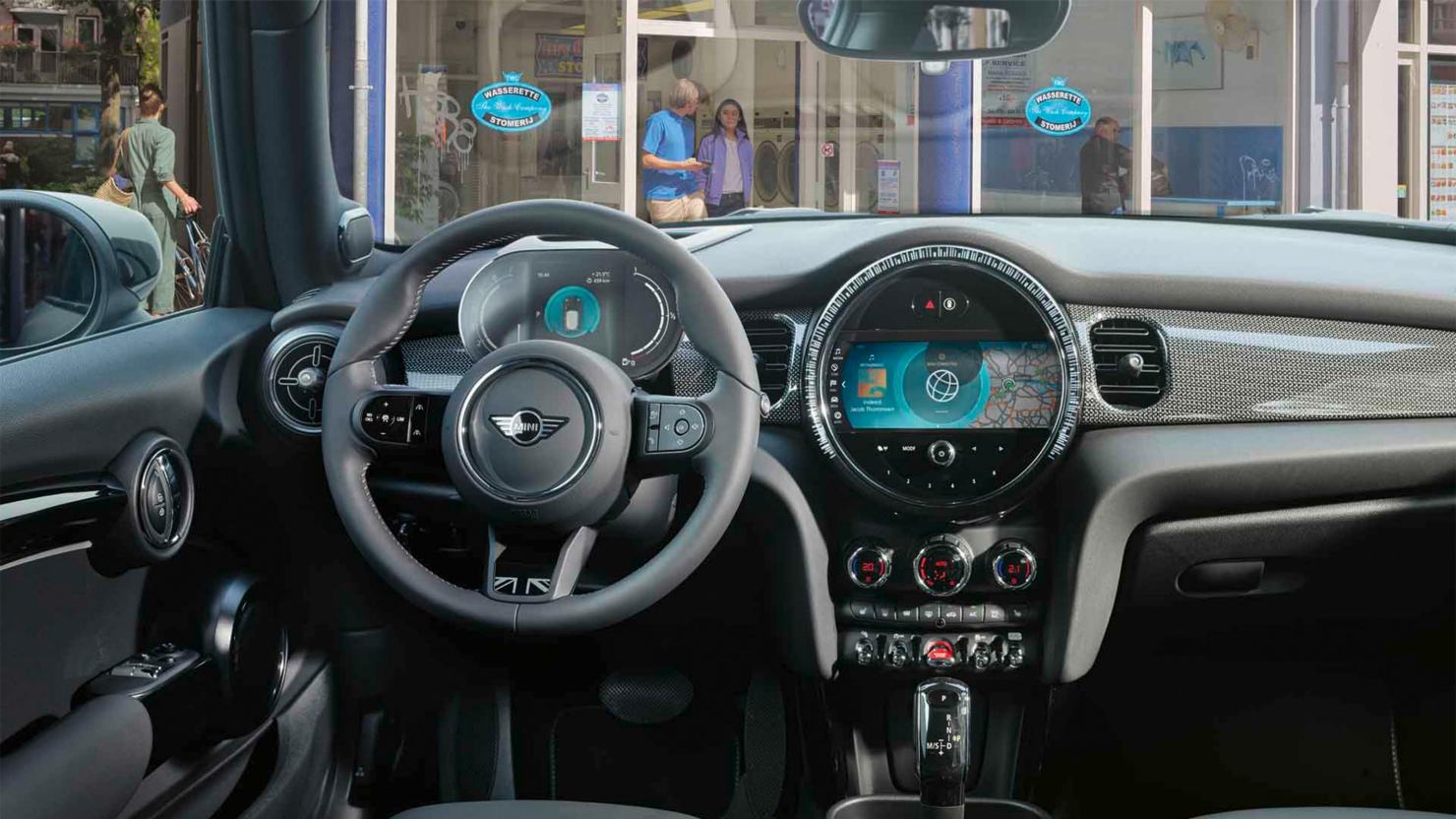
The Mini Electric's standout feature is the mini heads-up display above the wheel, letting you monitor various details from the car’s infotainment system without taking your eyes off the road. It can include navigation directions, infotainment functions, control data, and more. It’s not a feature that’s unique to Mini, but it’s not available in the Leaf.
The Mini also features an 8.8-inch touchscreen display, but doesn’t make the mistake of scrapping all the physical buttons. So you still have plenty of controls that can be handled the old fashioned way, be it via the dash, gauge cluster or controls on the steering wheel.
The Nissan Leaf is pretty much the same, though it has a smaller 8-inch touchscreen display. Both cars also come with in-house connectivity services, which includes navigation, though the Nissan Leaf has a key advantage in the form of smartphone integration. All Leaf models come with Android Auto and Apple CarPlay as standard, but the Mini Electric does not. It’s not even available as an optional extra.
One unique feature of the Leaf is the ePedal, a switch that lets you use the car's regenerative breaking system to activate one-pedal driving. This essentially means lifting your foot off the gas pedal starts slowing the car down to a halt, rather than coasting. And it recoups some power in the process.
So it seems as though the Nissan Leaf might be the way for you to go if you want to enjoy a more hi-tech driving experience. Just remember that the very best features are going to cost you a pretty penny.
Mini Electric vs Nissan Leaf: Outlook
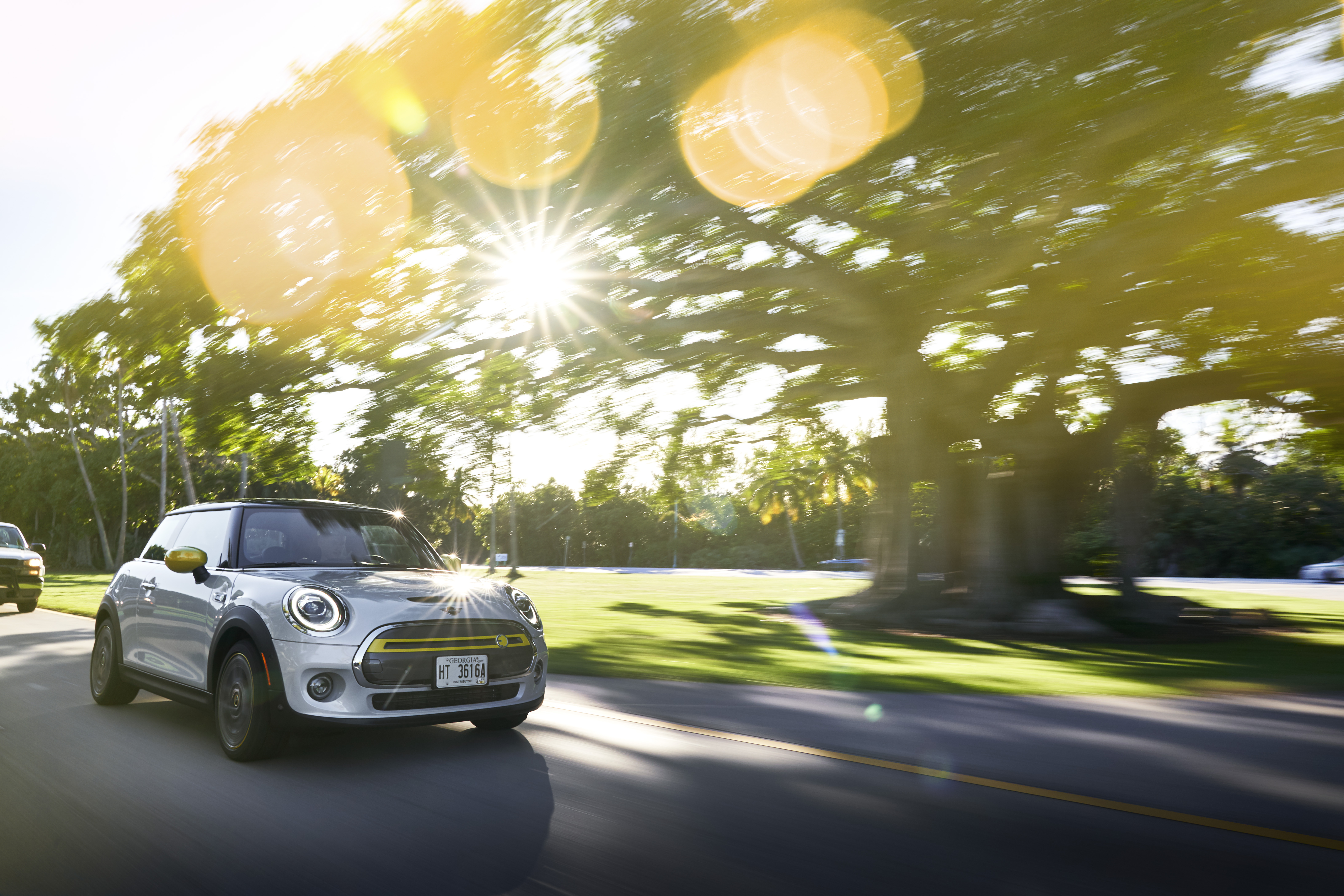
When it comes to the Mini Electric, what you see is basically what you get. While there are extra trims and options you can add to the car, all of which will alter the price, there’s only a single model with a single set of features for you to enjoy. The Nissan Leaf is a little bit different, with two different configurations and multiple different models to boot.
However, at the very cheapest level, it looks as though Nissan has the edge. Not only does the 40 kWh Nissan Leaf S have significantly more range than the Mini Electric, the slightly more expensive Leaf SV comes with more advanced features for less money than it costs to buy the Mini.
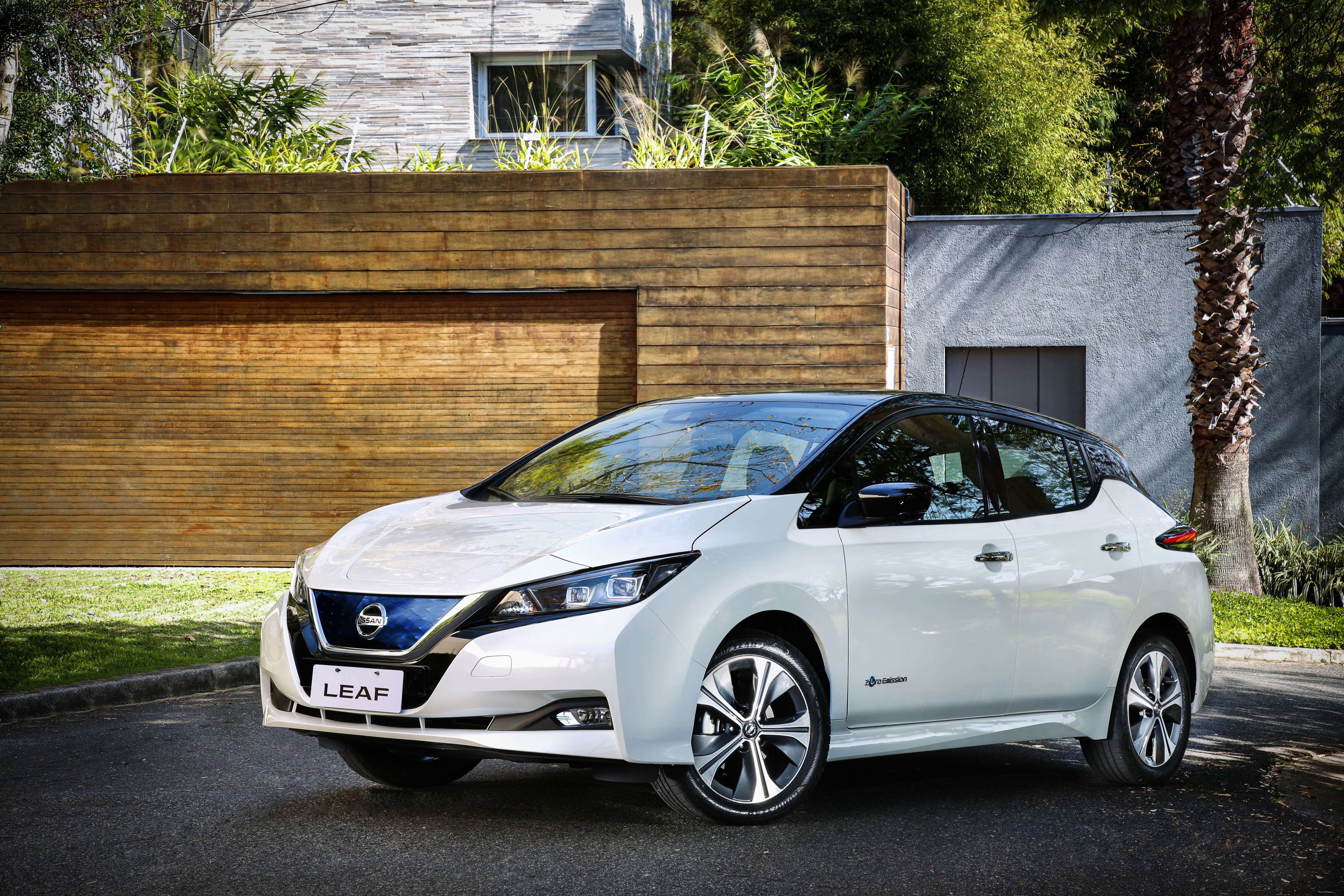
However, the Mini does have a performance edge over the 40 kWh Leaf models, with a higher top speed and better acceleration. We’re not talking supercar level performance here, but if you value speed over everything else, then the Mini is right for you. The Mini also looks nicer because it’s a Mini, not some boring plain hatchback any automaker could have made.
That being said, you can get more out of the Nissan Leaf if you are willing to pay for it. There may well be two Leaf models that cost less than a Mini, but they don’t really represent what the car can be capable of. Sadly, getting to that level is going to cost you a minimum of $37,400, and that’s before you consider the optional extras.
On paper the Leaf appears to be a winner on price and range alone, which will make it the more appealing model. But nobody can make that decision except you.
- More: Should you buy a used electric car? 5 things to consider
Sign up to get the BEST of Tom's Guide direct to your inbox.
Get instant access to breaking news, the hottest reviews, great deals and helpful tips.

Tom is the Tom's Guide's UK Phones Editor, tackling the latest smartphone news and vocally expressing his opinions about upcoming features or changes. It's long way from his days as editor of Gizmodo UK, when pretty much everything was on the table. He’s usually found trying to squeeze another giant Lego set onto the shelf, draining very large cups of coffee, or complaining about how terrible his Smart TV is.
